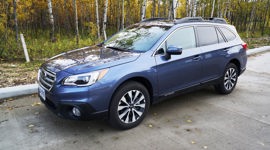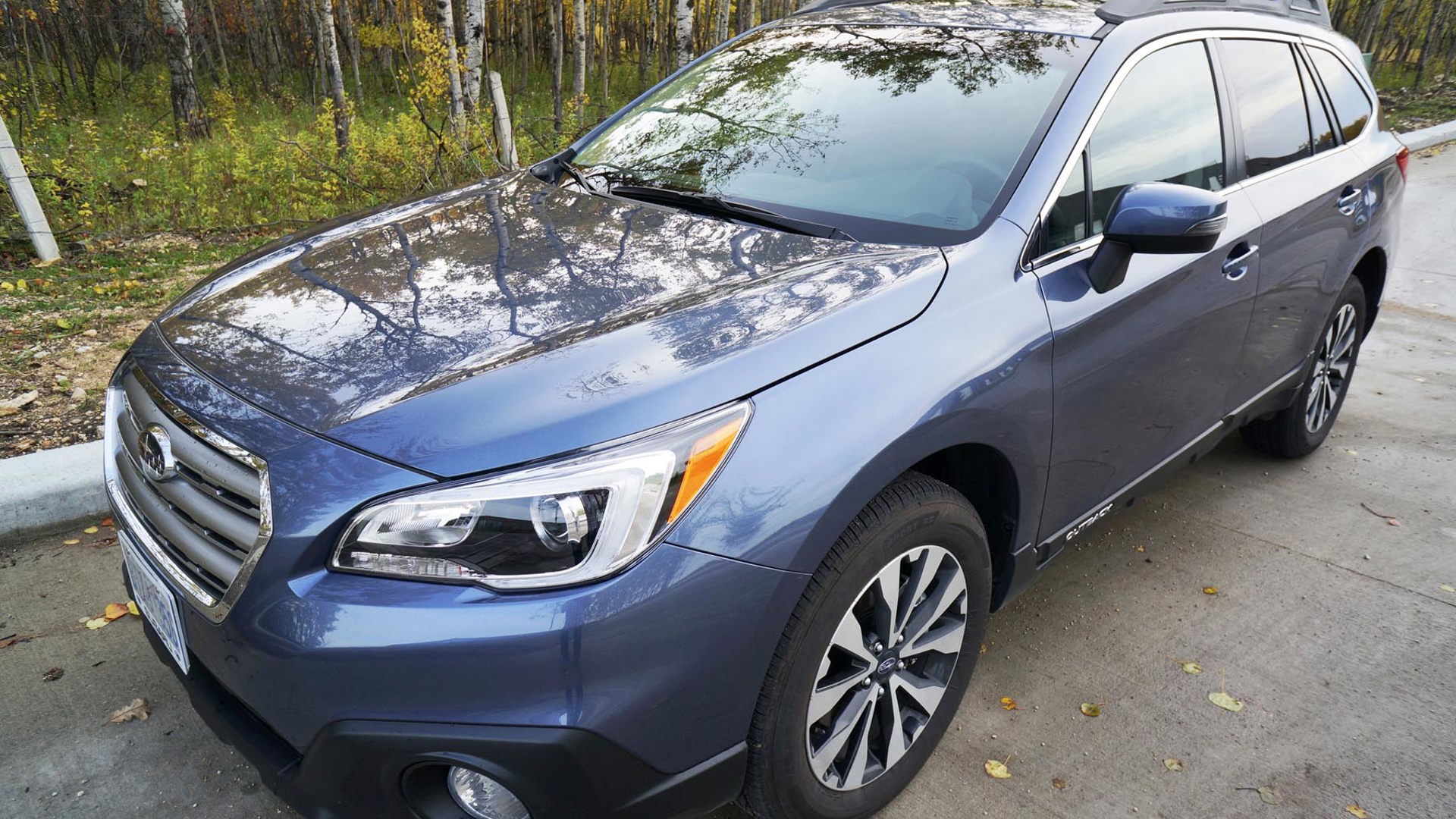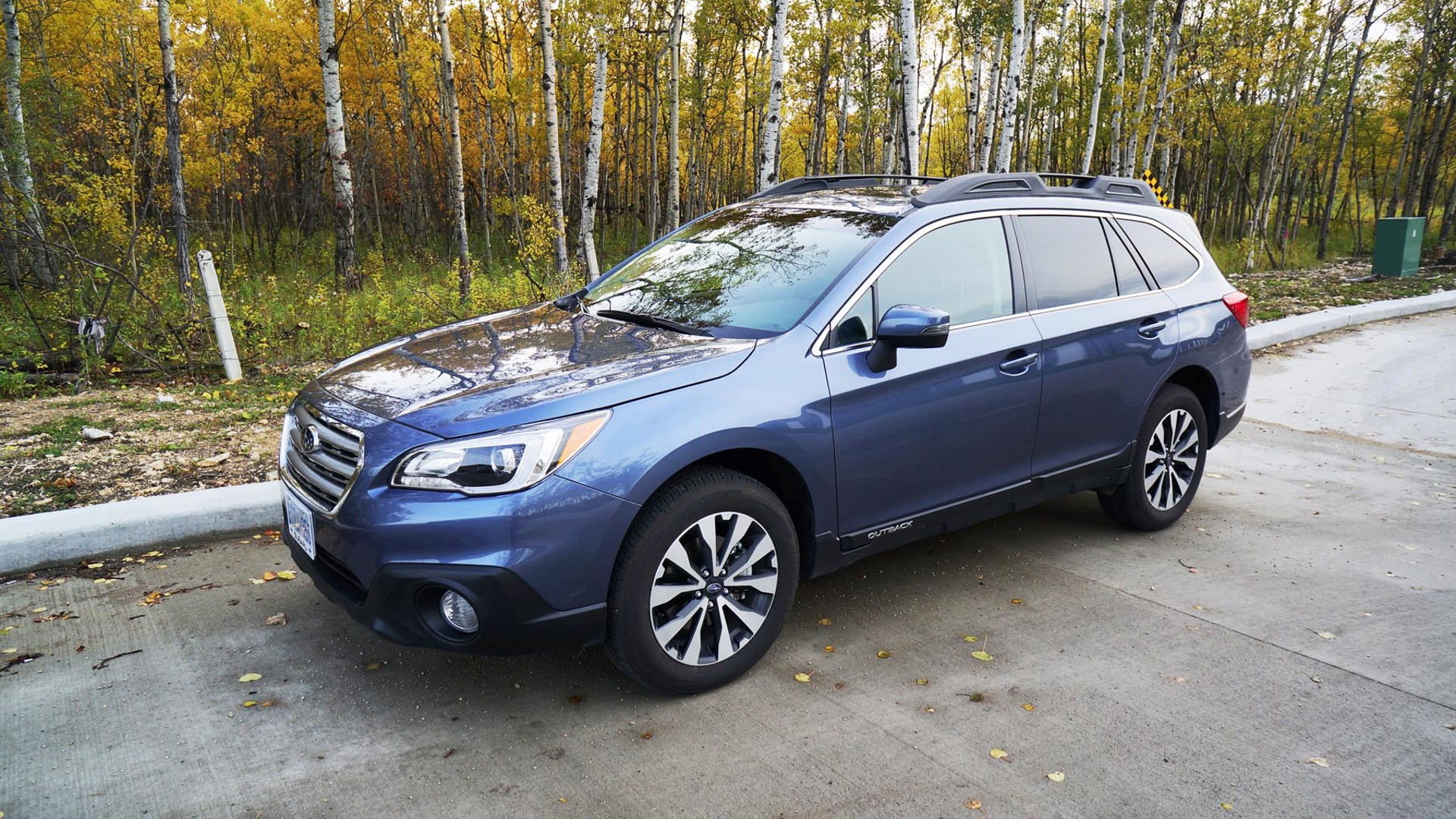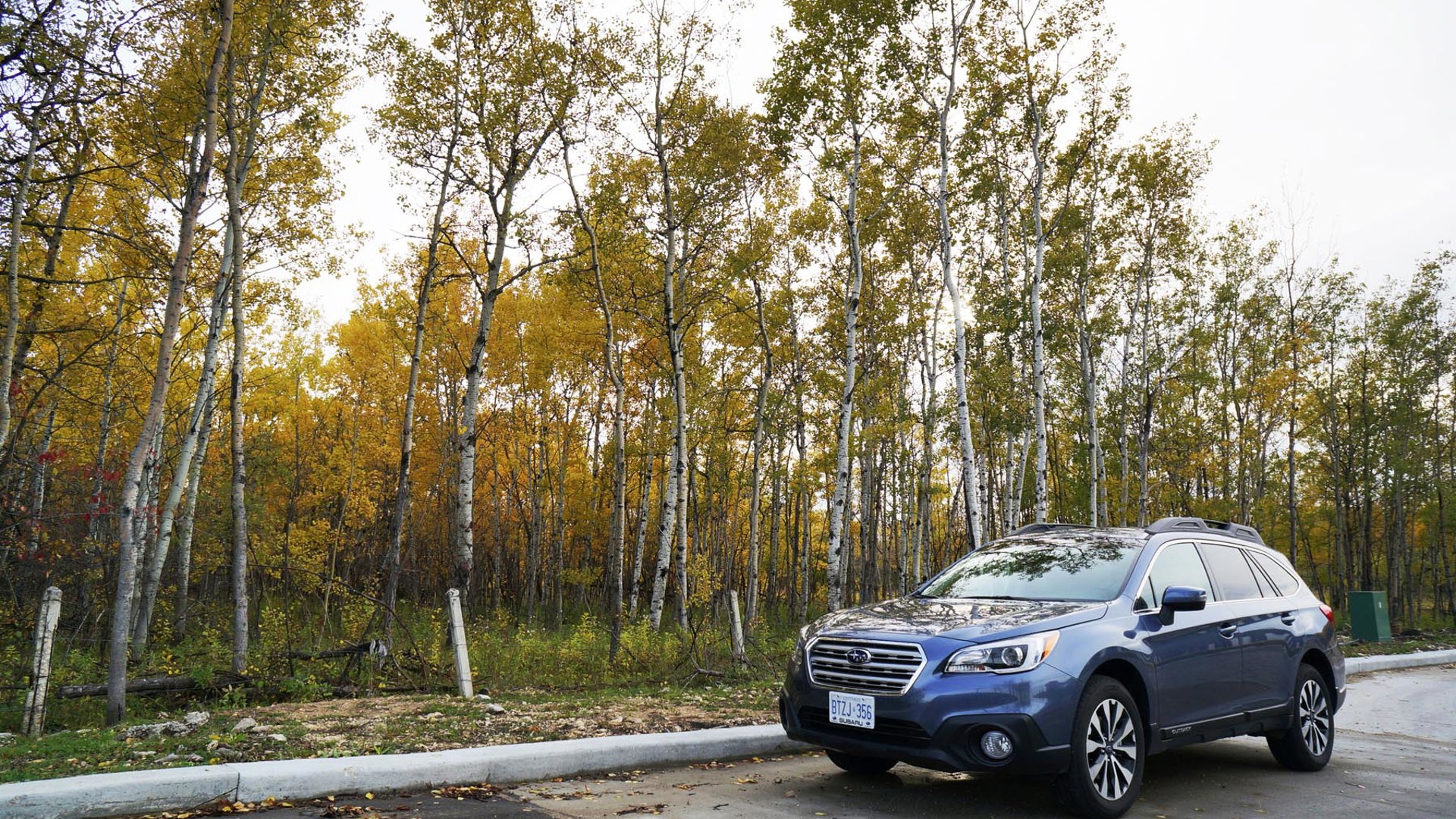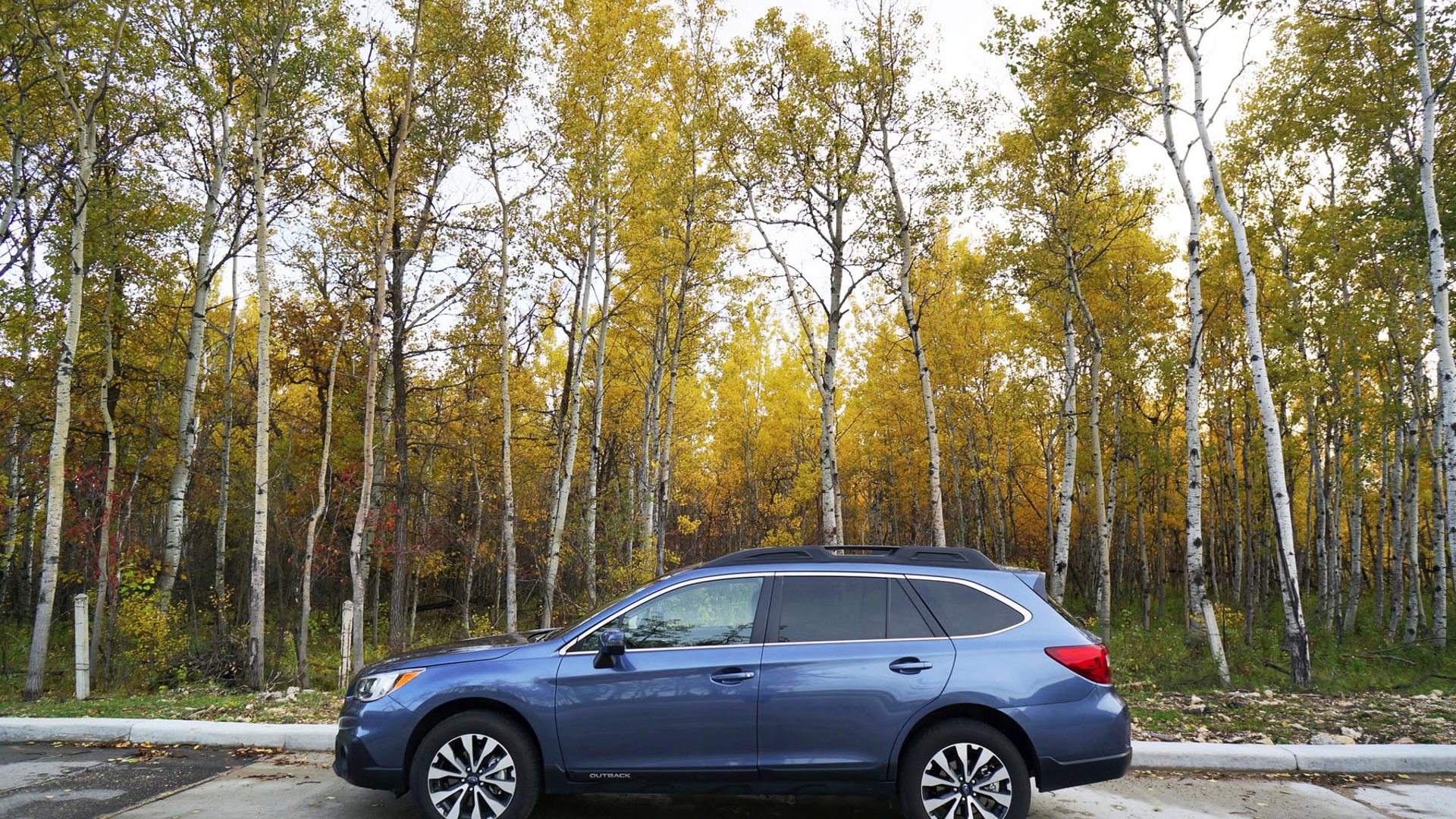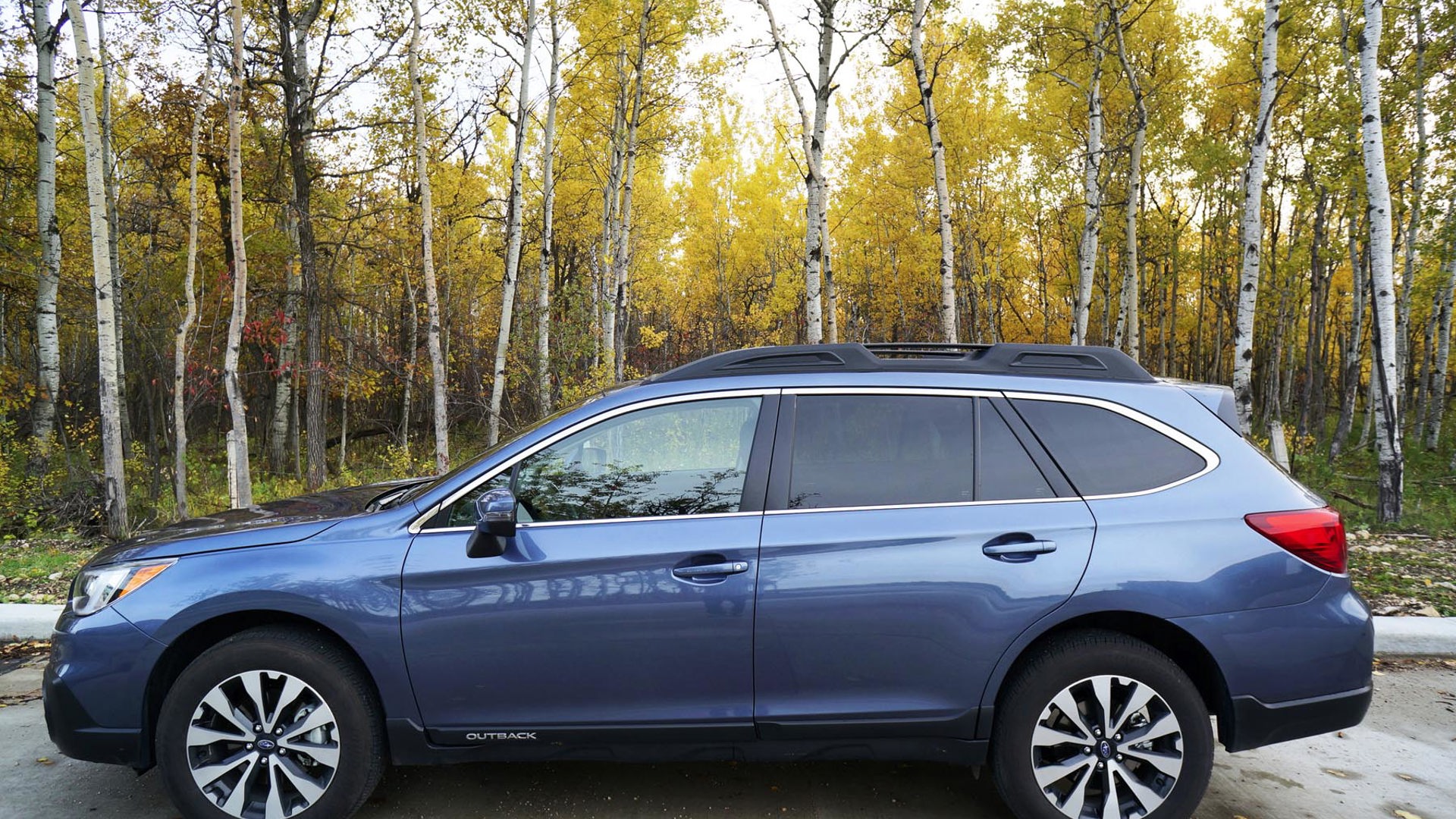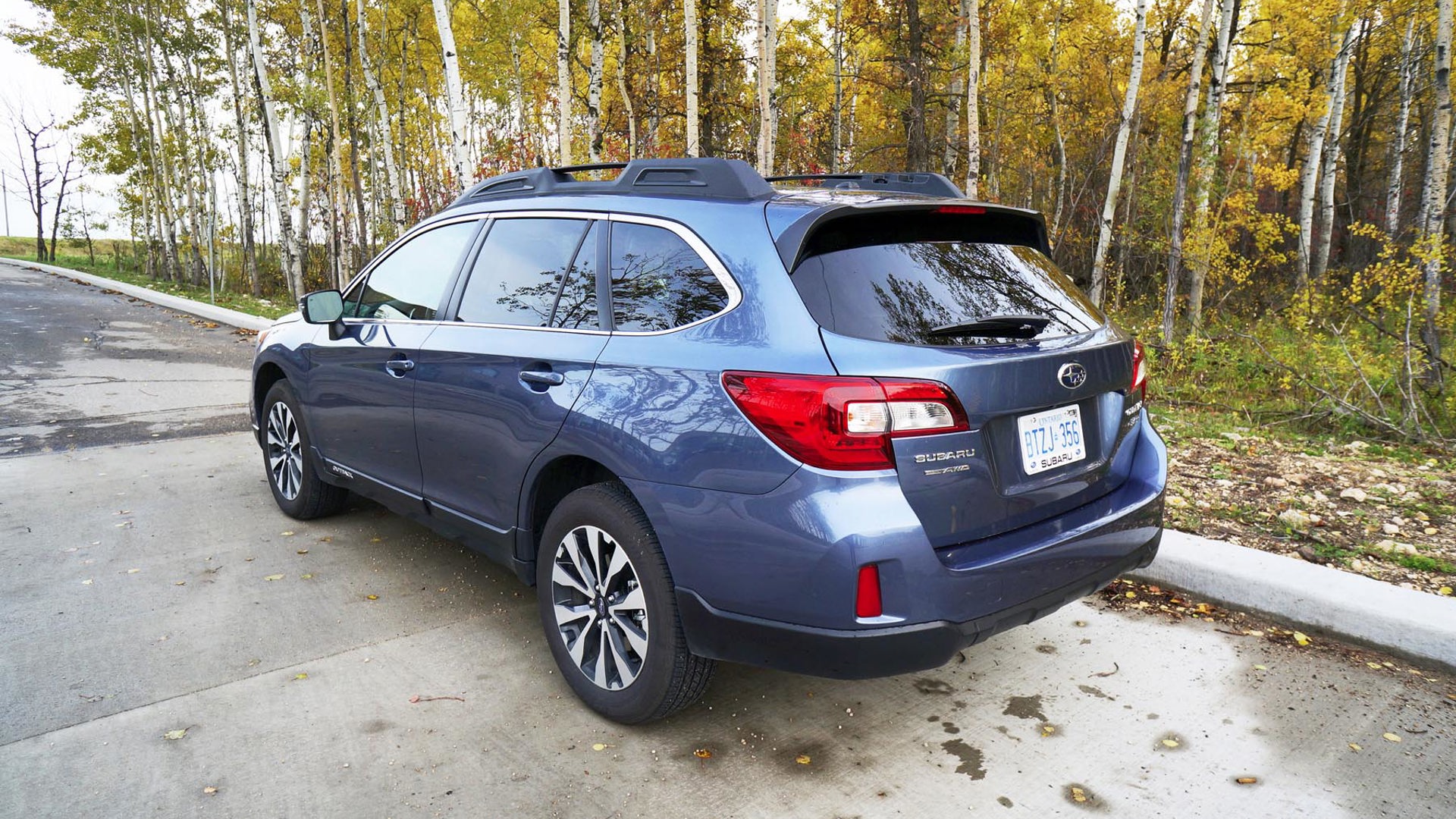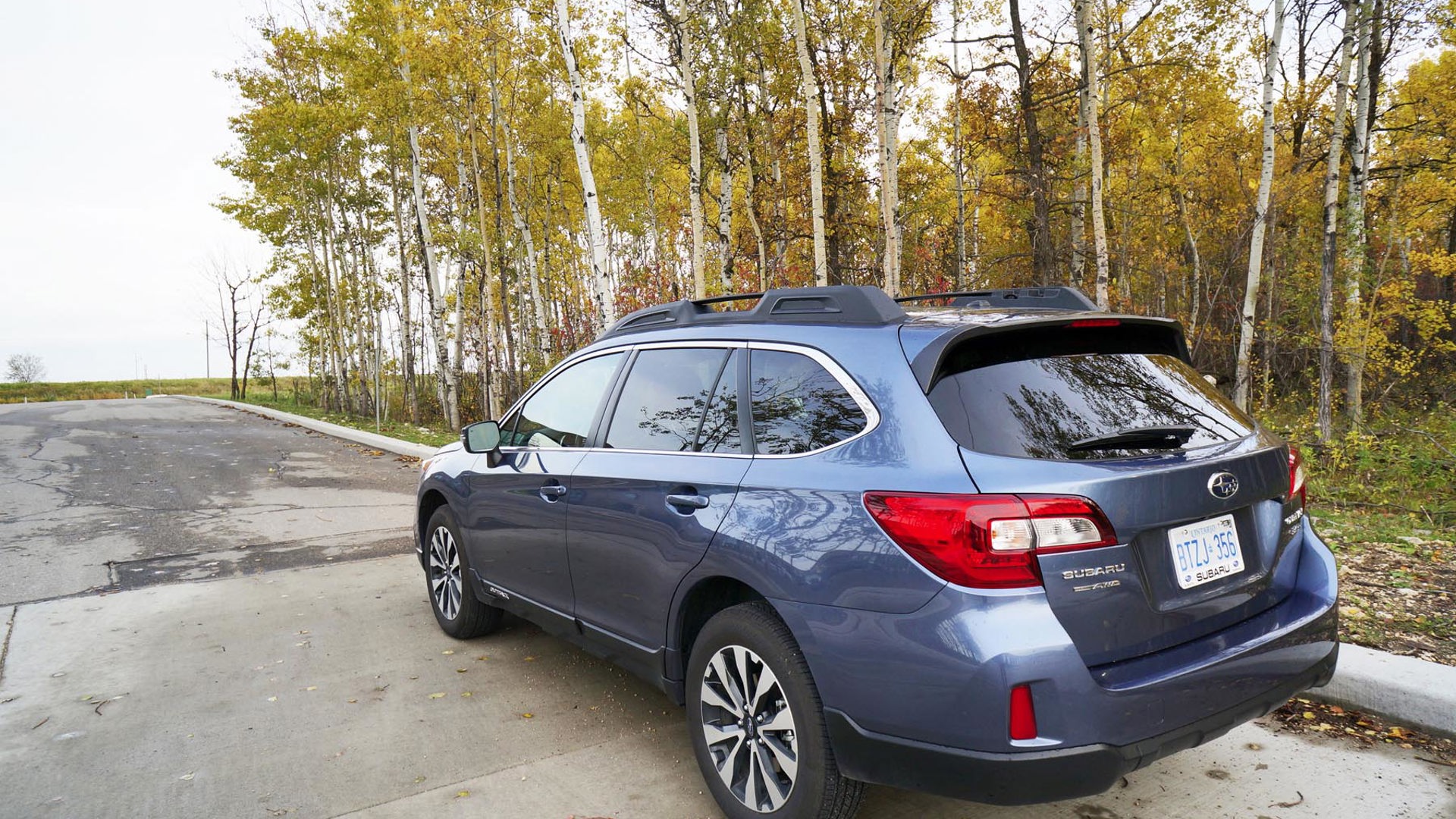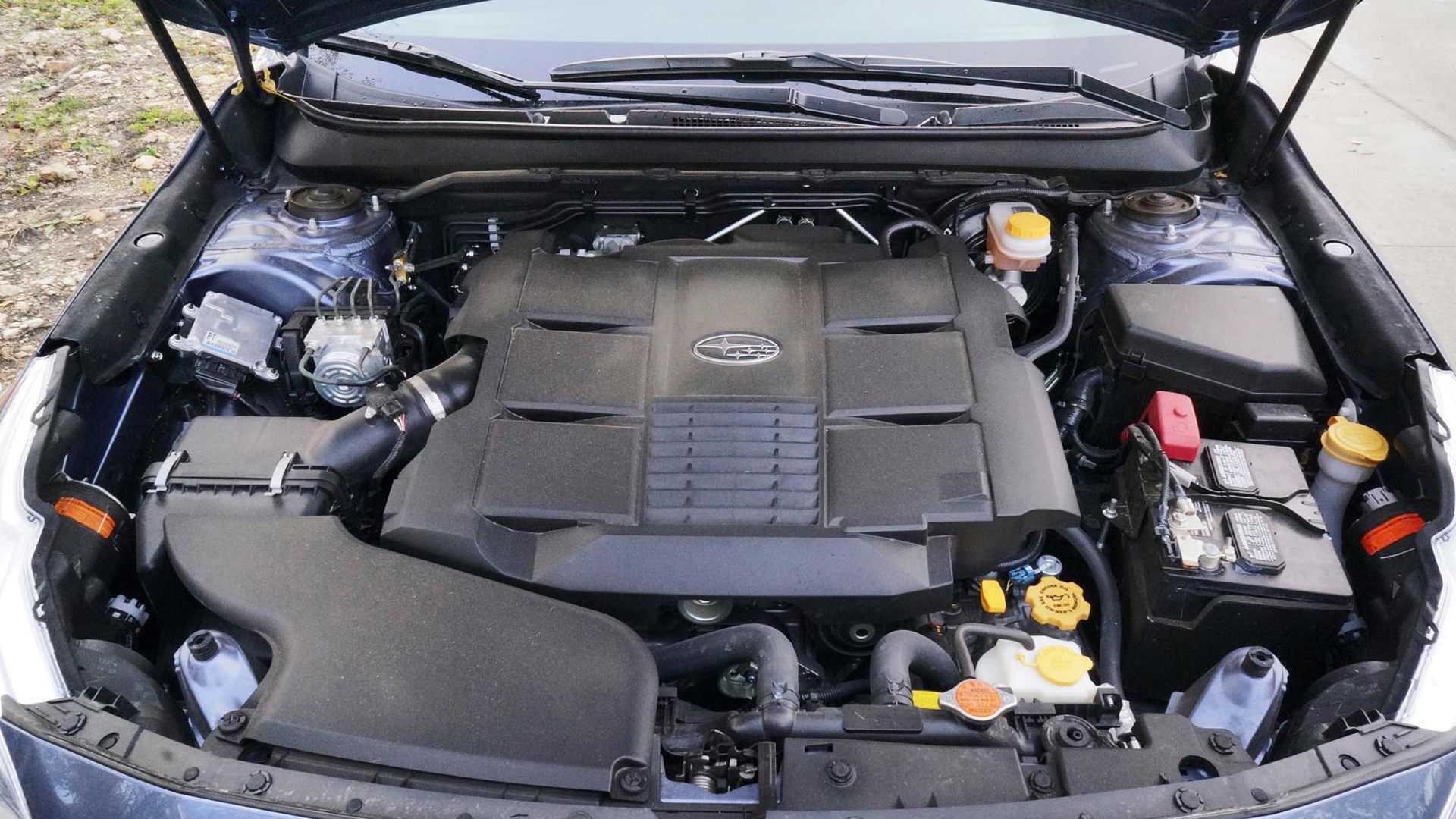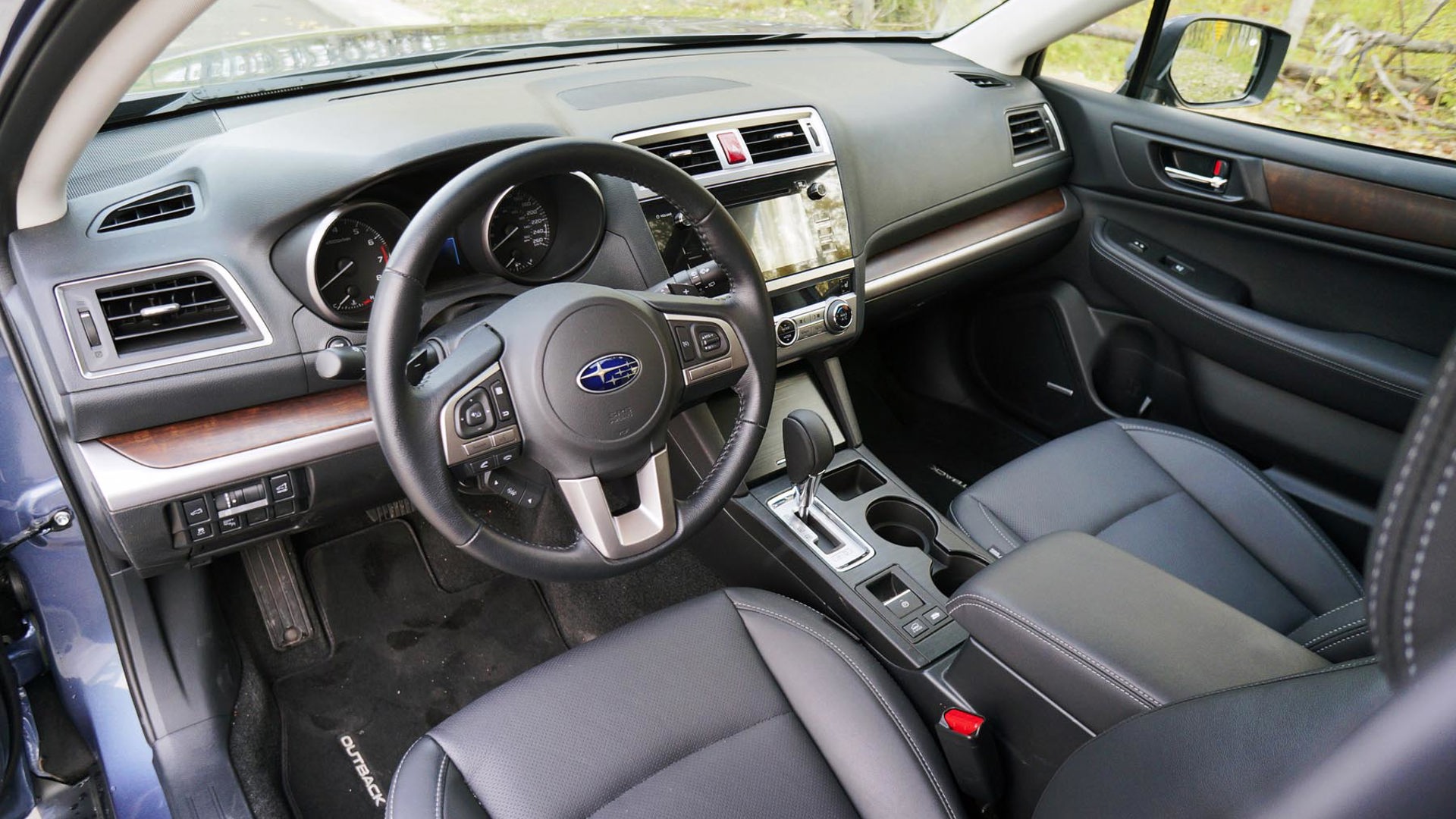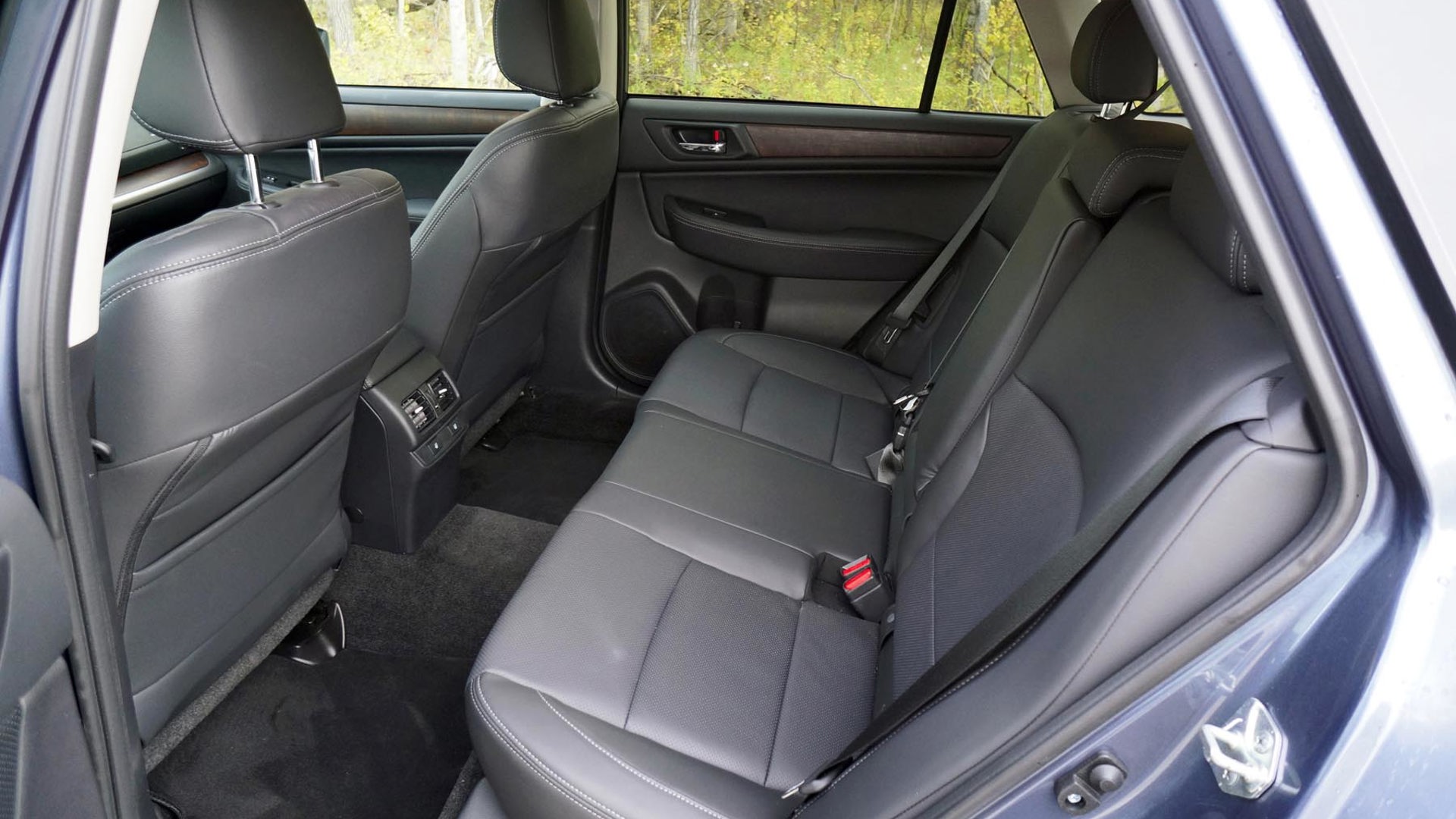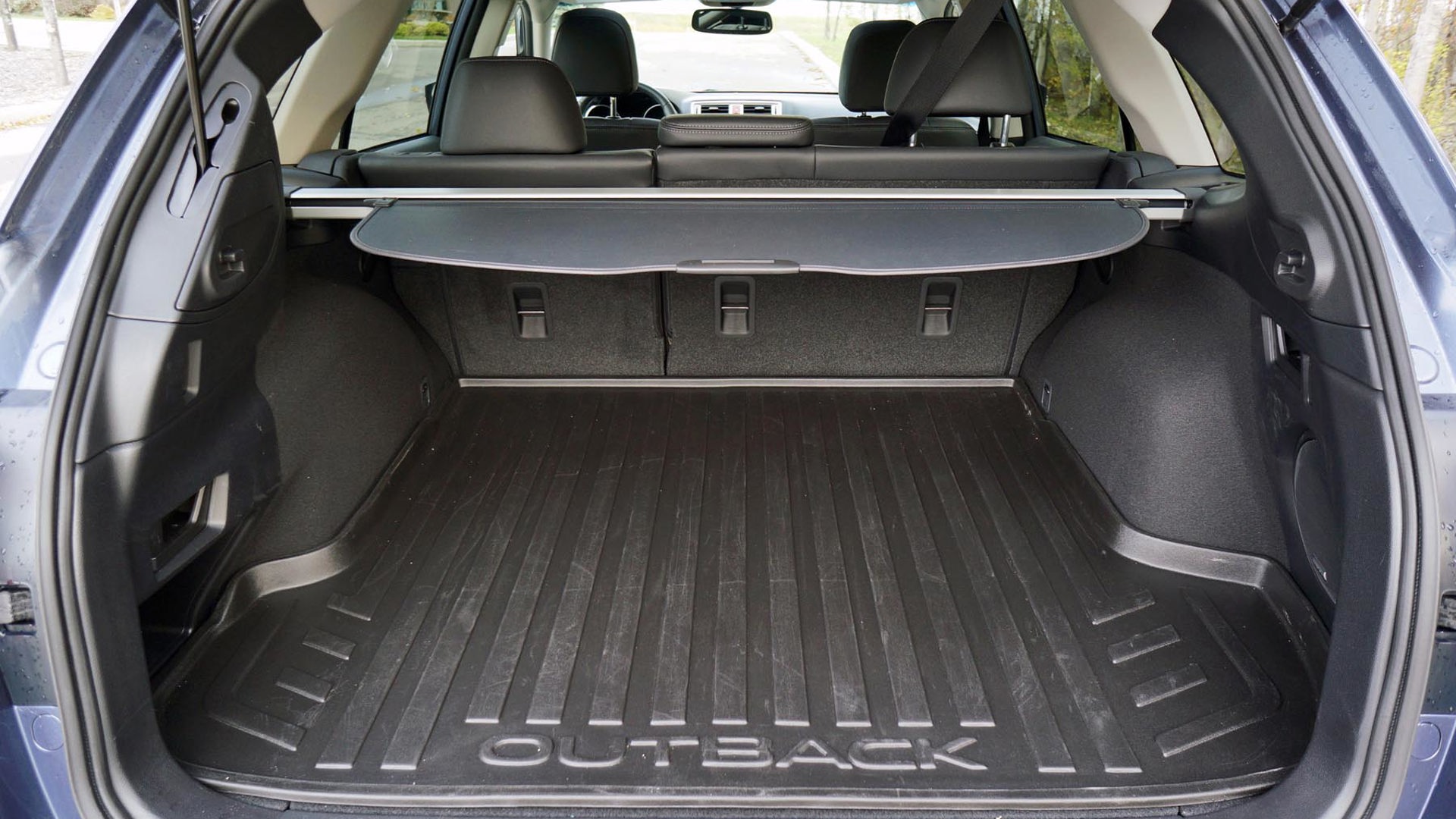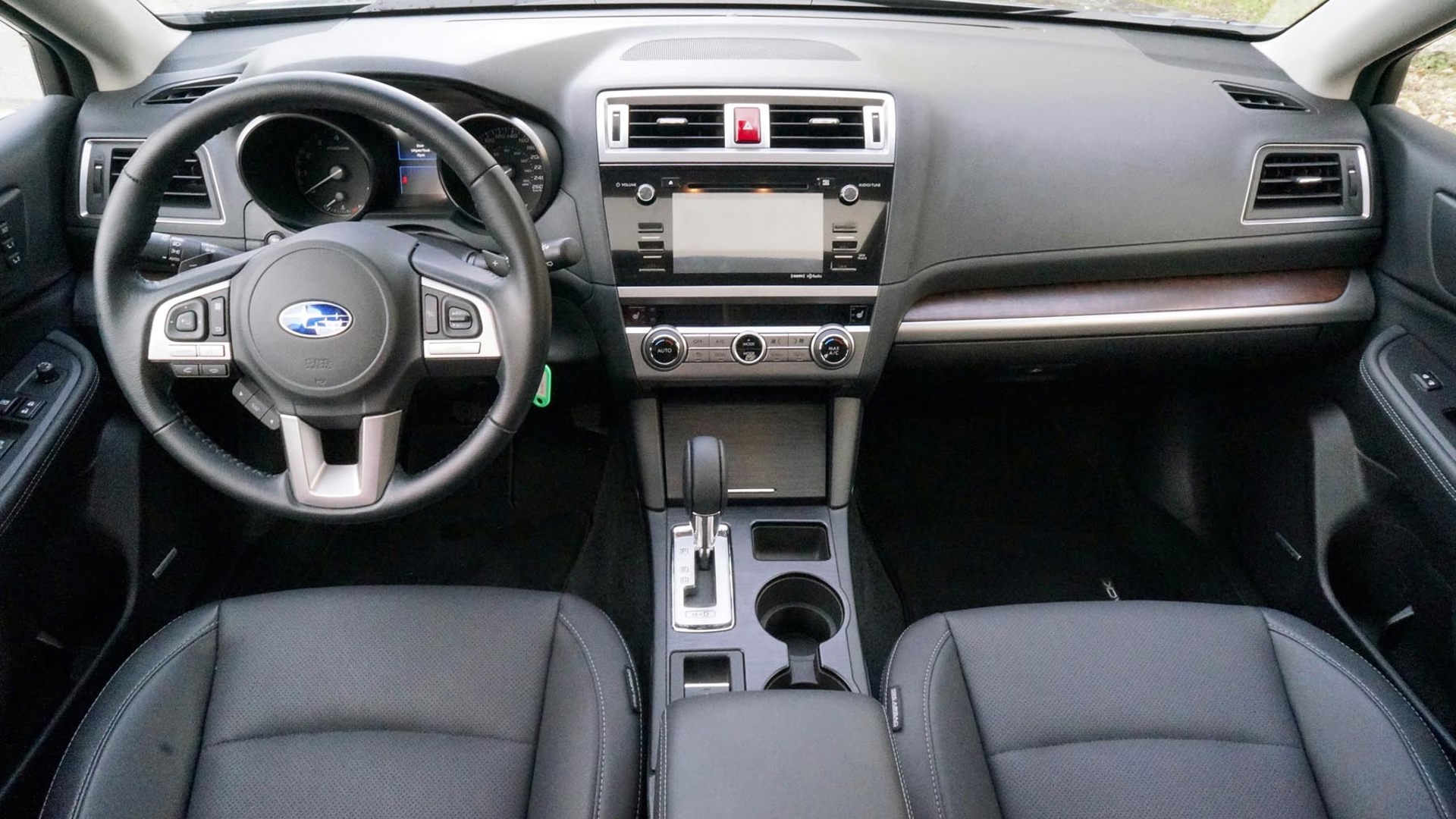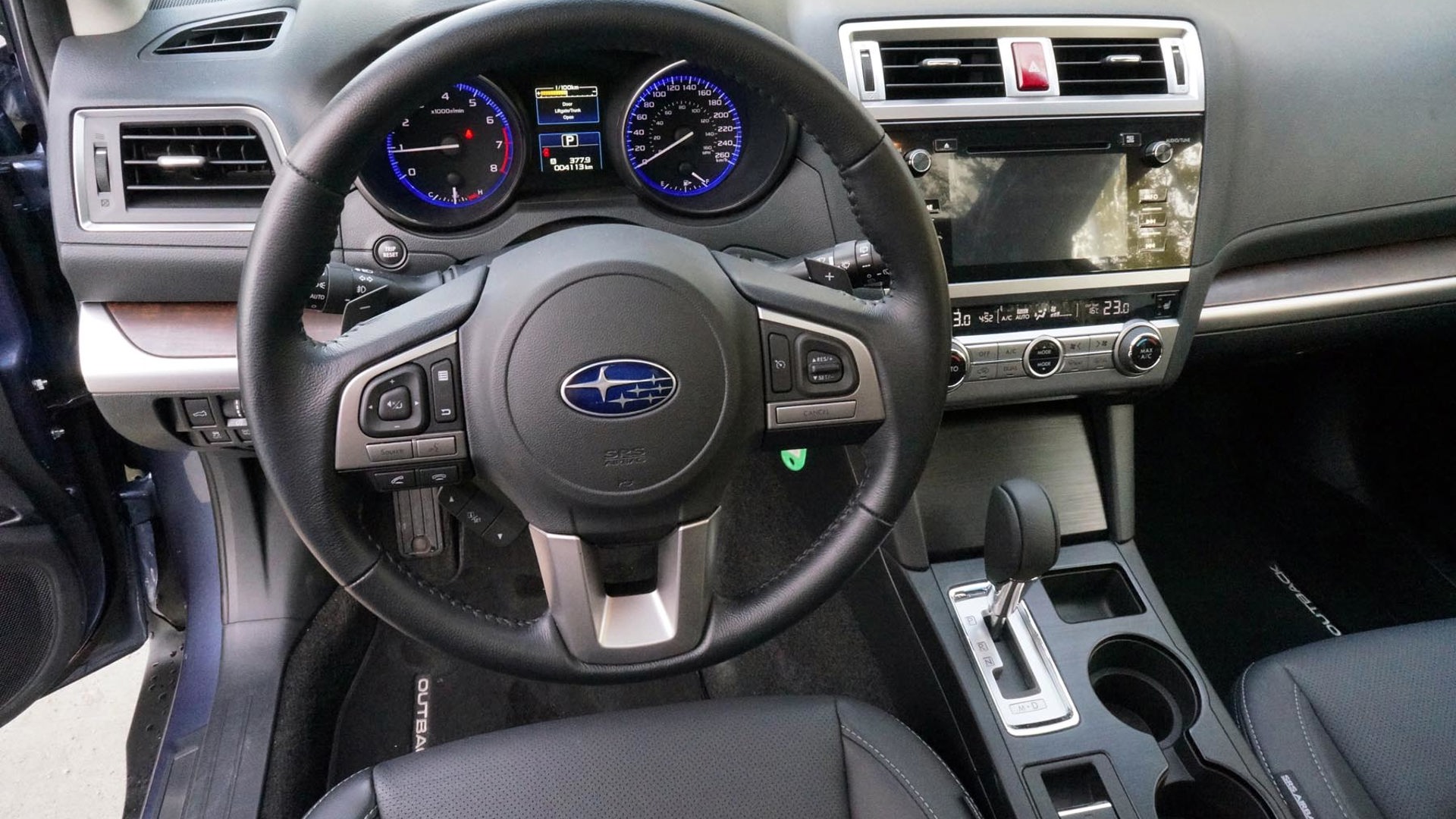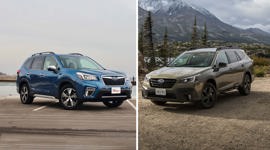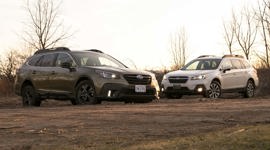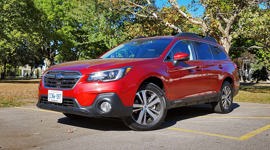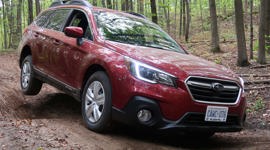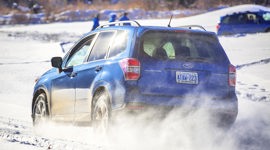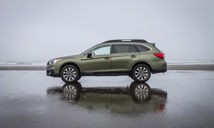If I were to give a most-improved award to one new vehicle for 2015, the Subaru Outback would take the honours.
At first blush, this jacked-up wagon doesn’t immediately distinguish itself as being significantly better than or even much different from its predecessor. But dismissing this as nothing more than a mid-cycle freshening would be a mistake. And it seems Canadian car buyers are appreciating the Outback’s newfound competencies, because for the last three consecutive months Outback sales have been at record levels. Critical acclaim is there as well: the Outback took top honours in its class for the AJAC Best New SUV/CUV in the Under $35,000 category.
While it’s immediately recognizable as an Outback, all of the details have been revisited to great effect.
So what is it about the new Outback that has people flocking to Subaru dealerships?
Gone is the awkward front-end styling that consistently reminded me of the Chrysler Sebring. It’s now more angular, filled with character and generally easier on the eyes. There’s a hint of the trendy clamshell hood (at the sides, at least) along with a windshield that has been pulled forward at its base for a sleeker appearance. The rear glass has taken on more of a slope as well. The car’s plastic lower body cladding has shrunk, which is just fine by me. So while it’s immediately recognizable as an Outback, all of the details have been revisited to great effect.
Small increases in major exterior dimensions for the Outback mean big gains in interior room: cargo capacity is bumped from 857 L to 1,005 L with the seats up, while a folded rear seat yields an increase of 56 L to 2,075 compared to last year. A 70 kg increase in curb weight seems palatable in this case.
If the Outback’s exterior enhancements are subtle yet effective, once inside it’s clear this is a very different ride. We’ve jumped at least one class upward with the new car’s interior furnishings. The dash is no longer dominated by a busy centre stack with too many buttons and too much silver-finished plastic. That would have been okay ten years ago, but interiors of today need to have a different vibe, and this Subie’s got it.
The new look is clean. A frameless, glossy touch screen display takes over more of the Outback’s functions and buttons are minimized and treated with high-end finishes that provide a richer overall look. The use of wood-grain trim is restrained and not objectionable – that’s about as high a compliment I can volley at wood-grain trim. The seats now have more shape and stitching and console storage is improved.
Under the hood, the familiar 2.5L flat-four and 3.6L flat-six options are offered, but they too have been upgraded for the new model year. The 2.5 is now rated at 175 hp and 174 lb-ft of torque; no significant change from last year. But fuel consumption goes down, from 9.9 L/100 km city and 7.8 highway to 9.3 and 7.1 respectively.
The 3.6 sees similar improvements: at 256 hp and 247 lb-ft of torque, output is unchanged. But this reworked powertrain benefits from a drop in consumption, the new model drinking 12.0 L/100 km in the city and 8.6 on the highway compared with 13.4 and 9.7 in last year’s model with the five-speed automatic. So now fuel consumption, previously not one of Subaru’s core virtues, is all of a sudden one of its strengths. An all-wheel-drive Toyota Venza V6, for comparison (and it should be compared with the Outback), actually consumes more fuel than the new Outback at 12.8 and 9.3 L/100 km respectively.
So essentially what Subaru is saying here is that people don’t need more power, but they should be able to have it produced more efficiently. I can dig that.
Pricing for the new Outback starts at $27,995, which is $500 less than last year’s model. Standard equipment for the 2.5i includes the Subaru-trademark all-wheel drive, Bluetooth connectivity, a 6.2-inch touchscreen, four-speaker audio, retractable cargo cover, heated front seats, tilt and telescoping wheel with integrated cruise control, automatic headlights, 17-inch steel wheels with covers, and 60/40 split rear seats with one-touch fold. The 2.5i can be upgraded with a Touring package, Limited package, and Technology options up to a sticker price of $37,095 with the same powertrain.
The optional mill, and the one found in our tester, can be had in the 3.6R Touring package at a starting price of $35,495. In addition to the added ponies and greatly enhanced smoothness afforded by the six-pot, There’s plenty of standard kit included in this model: six-speaker audio, a cargo mat, automatic climate control, auto-dimming mirrors, a power rear liftgate, power sunroof, 17-inch alloys, windshield wiper de-icer (I like that one), and a leather-wrapped steering wheel and shift lever.
Our Limited tester wore a sticker price of $38,895 and added some nice luxury bits: a larger 7-inch touchscreen and 12-speaker Harman/Kardon audio, HID lights, 18-inch wheels, leather on the seats and heat for the rear outboard passengers.
There’s also a tech package available (not found on our tester) that can be added to the Limited version of either model. For $1,200, buyers get push-button start, a larger information display in the instrument panel, and most significantly, Subaru’s EyeSight technology. This is a suite of advanced safety features that includes adaptive cruise control, lane departure warning, pre-collision braking, and some other technologies.
The Outback’s transformation going down the road can be most appropriately described as an increase in solidity. Body motions are restrained and our tester’s flat-six engine hummed along in a smooth and refined manner. As with the interior, we’ve easily gone a class up in driving manners.
Now we’re going to have to mark this date, because this is the first (and quite possibly the last) time I’ll get caught admitting this: the continuously variable transmission is a great match for the Outback’s silky six-pot and refined demeanour. This one’s different from most; it does a convincing job of mimicking a conventional geared automatic, to the point that it is unrecognizable as a CVT. This is by design, of course, and Subaru likely gave up some efficiency while programming the ratio management in the transmission, since the most efficient way to transfer the engine’s power is to link engine revs directly with power requirements. But if that were the case I’d be going on and on here about the transmission that I love to hate. This is one of the best CVTs on the market. Splendid; now I have to find something else to complain about.
There are a couple of things I would change, but these are minor niggles. First, the clock display is too small and disappears in the climate display. Once you know where it is, though, that’s a non-issue. The power liftgate in our Limited model is more reason for concern. First of all, it’s excruciatingly slow. There’s too long a delay waiting for it to start moving, and once underway it takes its sweet time. And it doesn’t look like there’s a manual override either. This feature would have benefited from a bit more development prior to being considered fully cooked.
A panoramic sunroof option, similar to what’s available on the Forester, would have been nice to see, particularly on the higher trim levels in the Outback.
I’ve always considered the Outback to be a fine machine with sometimes glaring faults. This new version for 2015 makes the old one a distant memory and its commercial and critical success is well deserved.
| Warranty: 3 years/60,000 km; 5 years/100,000 km powertrain; 5 years/unlimited distance corrosion perforation; 3 years/unlimited distance 24-hour roadside assistance Competitors: |
| Model Tested | 2015 Subaru Outback 3.6R Limited |
|---|---|
| Base Price | $38,895 |
| A/C Tax | $100 |
| Destination Fee | $1,650 |
| Price as Tested | $40,645 |
|
Optional Equipment
None
|
|
